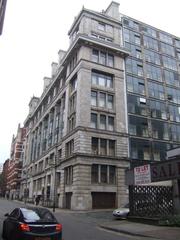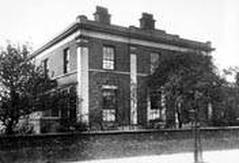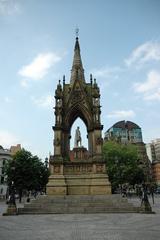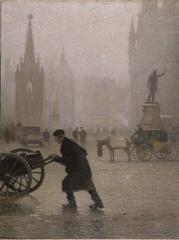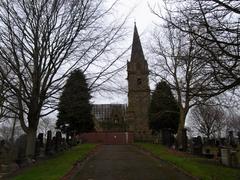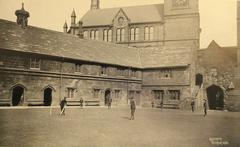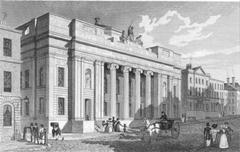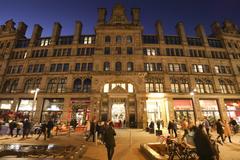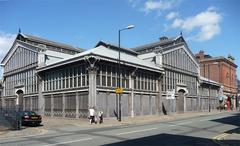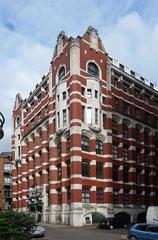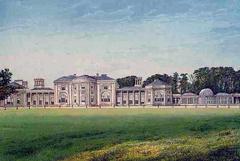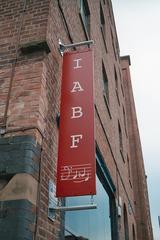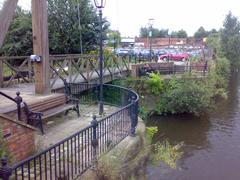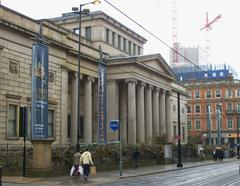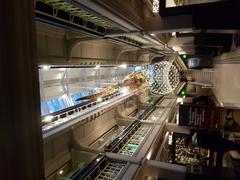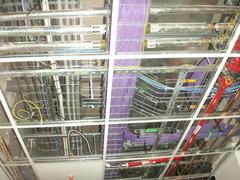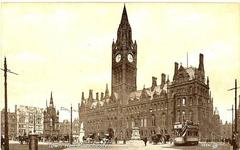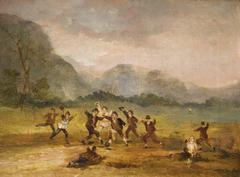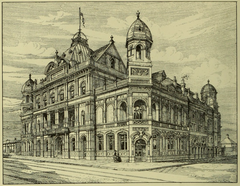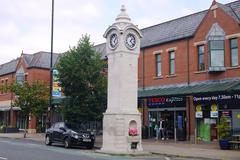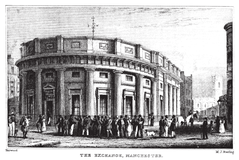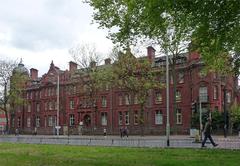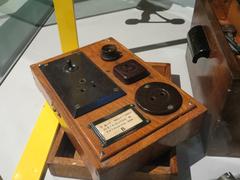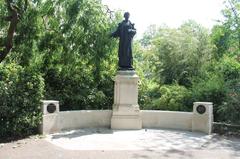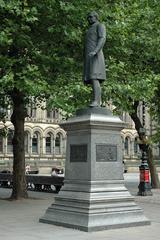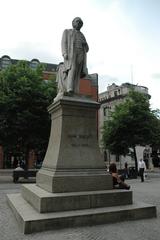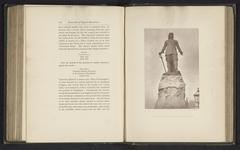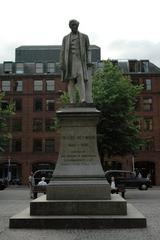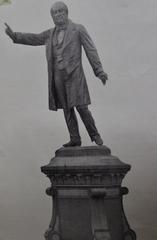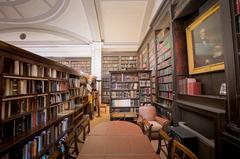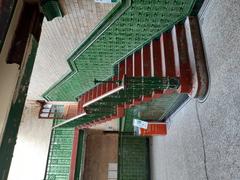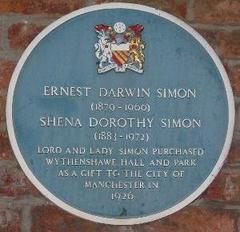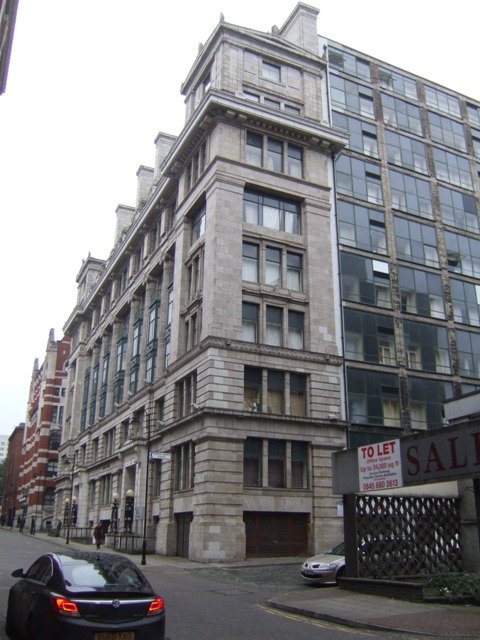
Orient House Manchester: Visiting Hours, Tickets, and Historical Sites Guide
Date: 14/06/2025
Introduction
Orient House is a landmark of Manchester’s industrial heritage and architectural ingenuity. Originally constructed as a Victorian warehouse at 65-66 Granby Row, the building represents the city’s significant role in the global textile trade during the late 19th and early 20th centuries. Its ornate Baroque façade, white glazed faience, and Greek Ionic columns are a testament to the era’s architectural trends and the prosperity Manchester enjoyed as “Cottonopolis.” Today, Orient House stands as a Grade II listed building, now adapted for residential use, and remains an essential part of Manchester’s urban fabric and cultural narrative (Manchester Victorian Architects; Historic England).
This guide provides a comprehensive overview for visitors and enthusiasts, including historical context, architectural highlights, practical information for sightseeing, recommended nearby attractions, and travel tips. Whether you’re an architecture fan, a history buff, or a curious traveler, this resource will help you appreciate Orient House’s unique place in Manchester’s story and plan a memorable visit.
Architectural Origins and Design Features
Orient House exemplifies the grandeur of Victorian warehouse design. Its Baroque influences are evident in the rusticated base, the prominent use of white glazed faience on the street-facing façade, and the classical Greek Ionic columns set between bay windows. The contrast between the highly decorative front and the utilitarian rear—featuring large metal-framed windows in plain glazed brick—embodies the dual priorities of 19th-century commercial buildings: projecting prosperity to the public while maximizing function and efficiency in working spaces (Manchester Victorian Architects).
Notable features include:
- Rusticated Stonework: Adds texture and visual weight at the ground and first floors.
- Greek Ionic Columns and Palmette Motifs: Provide classical elegance and symbolize stability.
- White Glazed Faience: Both decorative and practical, resisting pollution.
- Cast Iron Lamp Standards: Reflect the period’s attention to detail.
- Functional Rear Elevation: Maximizes natural light and efficiency for former warehouse operations.
Historical Context: Manchester’s Industrial Boom
During the 19th century, Manchester rapidly evolved into a global industrial powerhouse. The city’s warehouses were central to storing, displaying, and distributing textiles and other goods, with Orient House epitomizing the height of Victorian warehouse architecture. Its construction coincided with an era when Manchester was known as “Warehouse City,” home to over 1,800 warehouses that formed the backbone of its economic might. The ornate façade of Orient House was not just aesthetic; it was a statement of reliability and prestige, critical for business in a competitive commercial environment (Manchester Victorian Architects).
Evolution and Preservation
Orient House stands at the intersection of architectural eras. While its exterior reflects the decorative priorities of the Victorian period, its rear design hints at the functionalist philosophies that would later define modern industrial architecture. The building’s adaptive reuse as residential apartments demonstrates Manchester’s commitment to preserving its heritage while embracing urban regeneration (UNCLE).
Cultural and Social Importance
Proximity to Manchester’s Gay Village and Vibrant Districts
Orient House is located in one of Manchester’s most dynamic districts, adjacent to the internationally renowned Gay Village, Chinatown, and the Northern Quarter. The Gay Village, centered around Canal Street, is celebrated for its inclusivity and vibrant LGBTQ+ culture, hosting annual Pride events and contributing to the city’s diverse social fabric (UNCLE). The building’s transformation into pet-friendly, amenity-rich apartments (including a gym, yoga studio, and co-working space) exemplifies Manchester’s approach to urban renewal—honoring historical structures while fostering modern, inclusive communities.
Visiting Orient House: Hours, Tickets, and Accessibility
- Interior Access: Orient House is a private residential building; interior access is restricted to residents and their guests.
- Viewing: Visitors are welcome to admire the architectural details from Granby Row and public spaces.
- Guided Tours: While there are no regular public tours or ticketed entry, some heritage walking tours in Manchester’s city centre include Orient House as a highlight. Check with local heritage societies or the Manchester Visitor Information Centre for available tours (Visit Manchester).
- Transport: Located within a short walk of Manchester Piccadilly and Oxford Road stations, as well as major tram and bus routes.
- Accessibility: The surrounding area and building entrances are generally wheelchair-friendly. Step-free access is available to communal areas, and public transport options support mobility needs.
Nearby Attractions and Amenities
Enhance your visit to Orient House by exploring these nearby destinations:
- Manchester Art Gallery: Renowned for its fine art collections.
- Science and Industry Museum: Celebrates Manchester’s scientific and industrial achievements.
- Manchester Town Hall: A neo-Gothic masterpiece (viewed from the exterior).
- Chinatown and the Northern Quarter: Known for diverse dining, shopping, and street art.
- The Gay Village: Offers inclusive nightlife and cultural events (VisitBritain).
Numerous cafes, restaurants, and green spaces such as Sackville Gardens offer relaxation between sightseeing stops.
Practical Visitor Tips
- Best Times to Visit: For optimal weather and light, visit between April and September. Weekdays are quieter.
- Photography: The ornate façade is best photographed in soft morning or late afternoon light. Please respect residents’ privacy and avoid photographing into private spaces.
- Sustainable Travel: Manchester is a walkable city with extensive public transport and bike hire, supporting eco-friendly tourism (Visit Manchester – Sustainable Travel).
- Accommodation: Nearby hotels range from luxury (Kimpton Clocktower, The Midland) to budget options near Piccadilly Station (Manchester Pocket Guide). Book in advance during busy periods.
- Safety: The area is safe and well-patrolled, but remain aware of your surroundings, especially at night.
Frequently Asked Questions (FAQs)
Can I enter Orient House?
No, it is a private residential building. Visitors may view the exterior and join walking tours that include its history.
Are there visiting hours or tickets needed?
No tickets or public visiting hours apply. The building can be viewed from the street at any time.
Are guided tours available?
While no official tours of Orient House are offered, heritage walking tours of Manchester often include the building.
Is the area accessible for wheelchair users?
Yes, the area is generally accessible, with step-free routes and public transport support.
What nearby attractions should I visit?
Manchester Art Gallery, Manchester Town Hall, Chinatown, the Gay Village, and the Northern Quarter.
Visual and Interactive Resources
Explore virtual tours and image galleries of Manchester’s heritage buildings through the Manchester Visitor Information Centre. For high-resolution images and detailed architectural descriptions, visit the Historic England listing.
Essential Contacts and Resources
- Visitor Information: Visit Manchester
- Heritage Listing: Historic England
- Emergency Services: Dial 999 for emergencies
Summary and Final Tips
Orient House stands as a striking symbol of Manchester’s journey from an industrial giant to a cosmopolitan city that values both its heritage and diversity. Though public entry is not permitted, the building is a highlight on heritage walks and a focal point for appreciating the architectural and cultural evolution of the city. Its adaptation for residential use reflects Manchester’s philosophy of sustainable urban regeneration, blending the old with the new (UNCLE).
To enrich your experience:
- Join a heritage walking tour for deeper historical context.
- Explore the vibrant surrounding districts of the Gay Village, Chinatown, and Northern Quarter.
- Check for special events like Manchester Heritage Week.
- Use public transport and eco-friendly options to get around.
- Download the Audiala app for updates, self-guided tours, and insider tips.
For more on Manchester’s historic sites, culture, and travel resources, consult the links below.
References
- Orient House 65-66 Granby Row, Manchester Victorian Architects
- Visiting Orient House: Manchester’s Historic Warehouse and Cultural Landmark, UNCLE
- Heritage and History Attractions, Visit Manchester
- Orient House Listing, Historic England
- Getting Around Manchester, Visit Manchester
- Things to Do in Manchester, Visit Manchester
- Manchester Pocket Guide
- The Crazy Tourist
- VisitBritain
